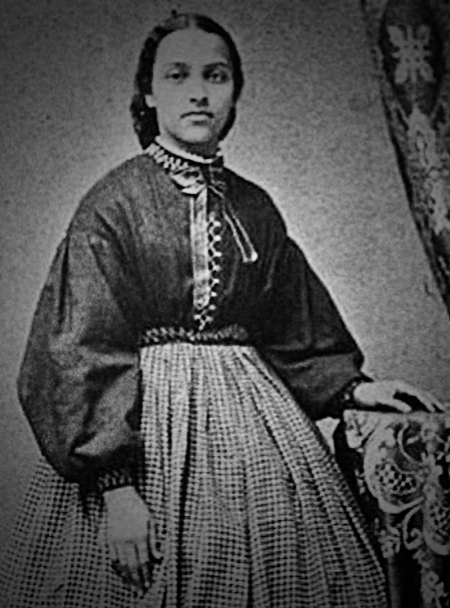Born in Raleigh, NC, Patterson was the oldest of Henry and Emeline Patterson’s seven 𝘤𝘩𝘪𝘭𝘥ren. By 1856 the family had settled in Oberlin, Ohio, which had a large community of black families; some were freed slaves and some were fugitives. Many of those families hoped to send their 𝘤𝘩𝘪𝘭𝘥ren to the racially integrated, coeducational college at Oberlin. Henry Patterson worked as a s𝓀𝒾𝓁𝓁ed mason there and the family boarded black students.
Mary Jane Patterson was the first African American woman to earn a bachelor’s degree (Oberlin College, 1862). Oberlin was popular because it had a racially integrated co-ed campus. In 1833, American clergymen John Shipherd and Philo Stewart founded this utopian community in Northeast Ohio named for an Alsatian pastor, John Frederick Oberlin.
Under Shipherd’s leadership, Oberlin College set important precedents. It was the first college in the United States to admit African-American students on an equal footing with whites (1835) and the nation’s first coeducational institution of higher education (1837).
Social reforms, including female moral reform, temperance, missionary activity, and particularly antislavery activism, permeated Oberlin. In its early years it was a station on the Underground Railroad.

Mary Jane Patterson
Patterson graduated with highest honors in 1862, becoming the first Black woman to receive a B.A. degree from an established American college. Eventually, her four siblings graduated from Oberlin College, and all became teachers.
According to Blackpast.org, “Patterson spent the next year as a teacher in the southern Ohio town of Chillicothe.” In 1865 at the age of 22, she left Ohio for Philadelphia, Pa., where became an assistant to Fanny Jackson Coppin at Philadelphia’s Institute for Colored Youth (now Cheyney University of Pennsylvania).
Patterson became a successful teacher. And, in 1871 she was appointed as the school’s first Black principal, from 1871 to 1872 and she taught at the Institute for Colored Youth for the next five years. Patterson spent her career creating new educational opportunities for African Americans after the Civil War.
Patterson became a successful teacher in Washington, D. C. , at the Preparatory High School for Colored Youth known today as Dunbar High School (Washington, D.C.) . In 1871 she was appointed as the first black principal of a high school in Washington, DC.
However, after one year she was demoted to assistant principal under Richard T. Greener, the first black graduate of Harvard University. Greener left after one year, and Patterson was reappointed to the position of principal until her resignation in 1884.
Among her achievements were the establishment of high school commencement and the addition of a teacher-training program. Patterson’s commitment to thoroughness helped her establish the school’s strong intellectual standards and increased the school’s enrollment from less than 50 students to 172.
Notable Black American Women quoted a description of Patterson written by Mary Church Terrell, another Oberlin alumna, in the July 1917 Journal of Negro History:
“She was a woman with a strong, forceful personality, and showed tremendous power for good in establishing high intellectual standards in the public schools. Thoroughness was one of Miss Patterson’s most striking characteristics as a teacher. She was a quick, alert, vivacious and indefatigable worker.”
Patterson was also a humanitarian and devoted time and money to many organizations. She, Josephine Beall Bruce, Anna Julia Cooper, Charlotte Forten and Mary Church Terrell, founded the Colored Women’s League of Washington, DC in 1894, a predecessor of the National Association of Colored Women. The League focused on training kindergarten teachers and providing industrial and homemaking s𝓀𝒾𝓁𝓁s for working-class women.
Mary Jane Patterson died at the tender age of 54, on Sep5. 24, 1894, at her home in Washington, DC.
Her obituary in the Sept. 25 edition of the Washington Evening Star noted that she “co-operated heartily in sustaining the Home for the Aged and Infirm Colored People in this city, and other Kindred organizations,” and “devoted much of her means and time to forming and sustaining an industrial school for girls of her race.”
Although she is a not well-known figure, Mary Jane Patterson was a pioneer in black education and paved the way for other African American female educators. Her pioneering educational attainments and her achievements as a leading black educator influenced generations of black students.
